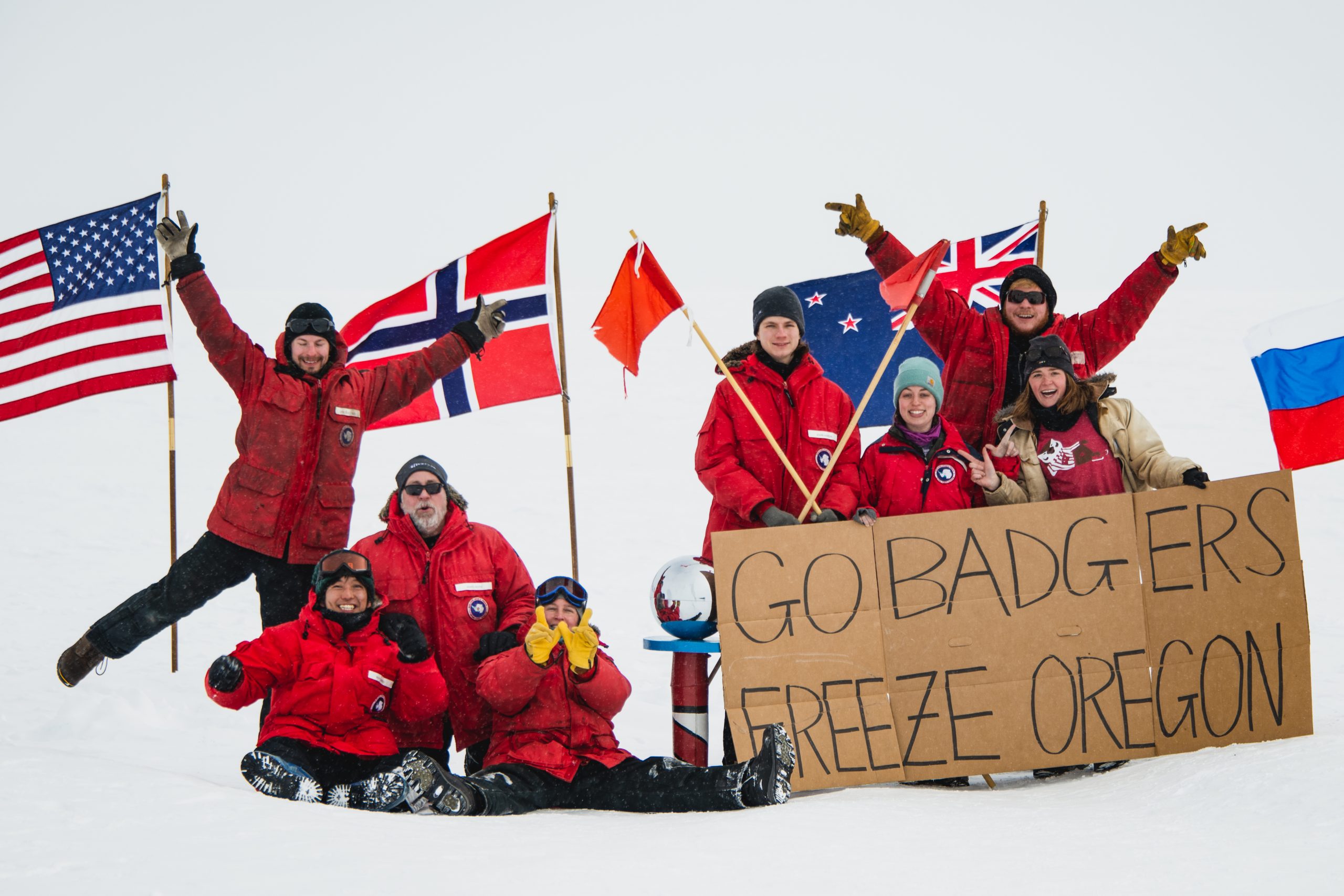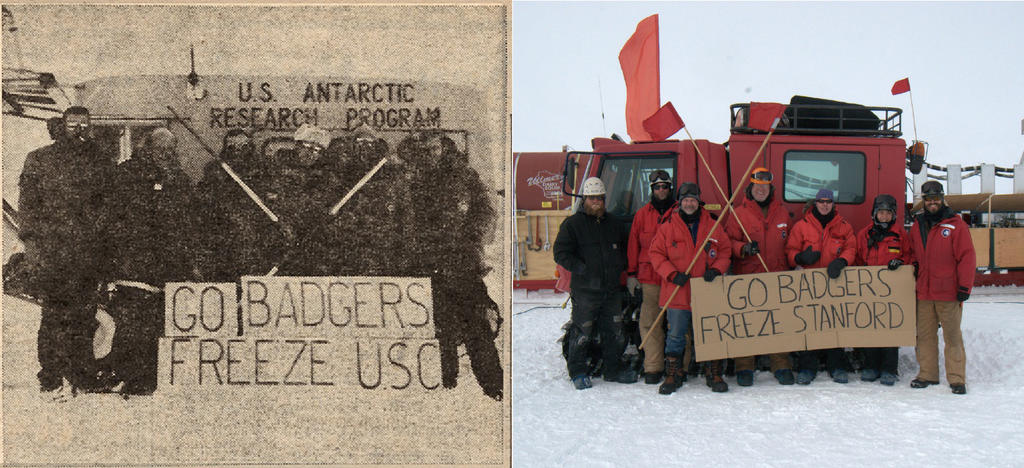
Continuing a long tradition, University of Wisconsin–Madison researchers at the IceCube Neutrino Observatory at the South Pole have declared their allegiance in the 2020 Rose Bowl with a sign reading, “Go Badgers, Freeze Oregon.”
In honor of the 1962 Rose Bowl, UW–Madison researchers, then part of the U.S. Antarctic Research Program, encouraged the Badgers to “freeze” out USC. For the 2013 Rose Bowl, IceCube researchers put Stanford on notice. This year, the University of Oregon is in their sights.

As the world’s largest astronomic observatory, IceCube harnesses a billion tons of Antarctic ice to watch for neutrinos, slippery particles that constantly traverse space. IceCube is headquartered at UW–Madison and recently revealed the first known source of cosmic rays by tracing a stream of high-energy neutrinos back to the supermassive black hole that flung them toward Earth. During the Antarctic summer, which spans December to March, IceCube and UW–Madison Physical Sciences Laboratory members are preparing to upgrade the experiment and replacing servers at the lab.